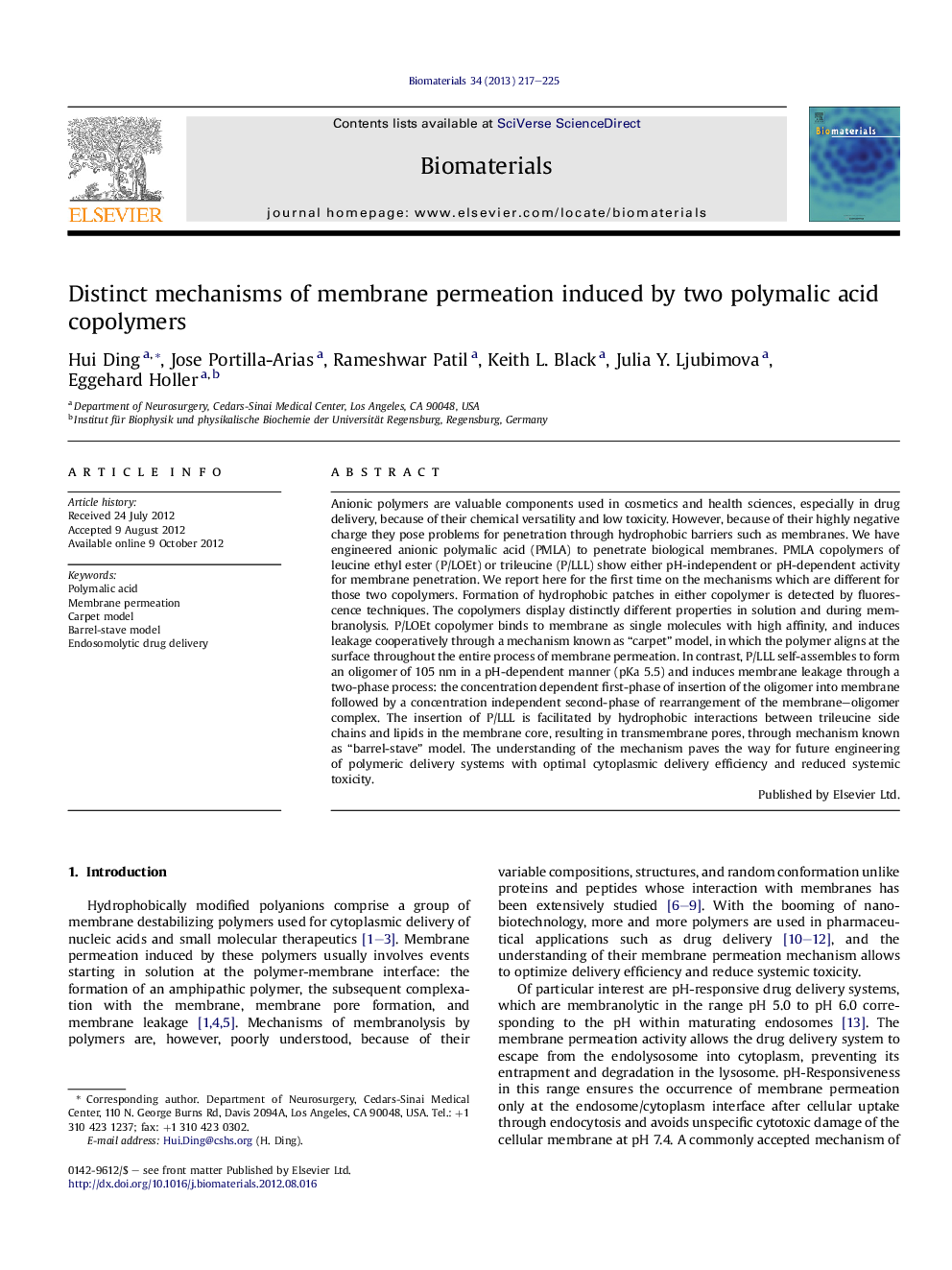| کد مقاله | کد نشریه | سال انتشار | مقاله انگلیسی | نسخه تمام متن |
|---|---|---|---|---|
| 6751 | 514 | 2013 | 9 صفحه PDF | دانلود رایگان |

Anionic polymers are valuable components used in cosmetics and health sciences, especially in drug delivery, because of their chemical versatility and low toxicity. However, because of their highly negative charge they pose problems for penetration through hydrophobic barriers such as membranes. We have engineered anionic polymalic acid (PMLA) to penetrate biological membranes. PMLA copolymers of leucine ethyl ester (P/LOEt) or trileucine (P/LLL) show either pH-independent or pH-dependent activity for membrane penetration. We report here for the first time on the mechanisms which are different for those two copolymers. Formation of hydrophobic patches in either copolymer is detected by fluorescence techniques. The copolymers display distinctly different properties in solution and during membranolysis. P/LOEt copolymer binds to membrane as single molecules with high affinity, and induces leakage cooperatively through a mechanism known as “carpet” model, in which the polymer aligns at the surface throughout the entire process of membrane permeation. In contrast, P/LLL self-assembles to form an oligomer of 105 nm in a pH-dependent manner (pKa 5.5) and induces membrane leakage through a two-phase process: the concentration dependent first-phase of insertion of the oligomer into membrane followed by a concentration independent second-phase of rearrangement of the membrane–oligomer complex. The insertion of P/LLL is facilitated by hydrophobic interactions between trileucine side chains and lipids in the membrane core, resulting in transmembrane pores, through mechanism known as “barrel-stave” model. The understanding of the mechanism paves the way for future engineering of polymeric delivery systems with optimal cytoplasmic delivery efficiency and reduced systemic toxicity.
Journal: Biomaterials - Volume 34, Issue 1, January 2013, Pages 217–225